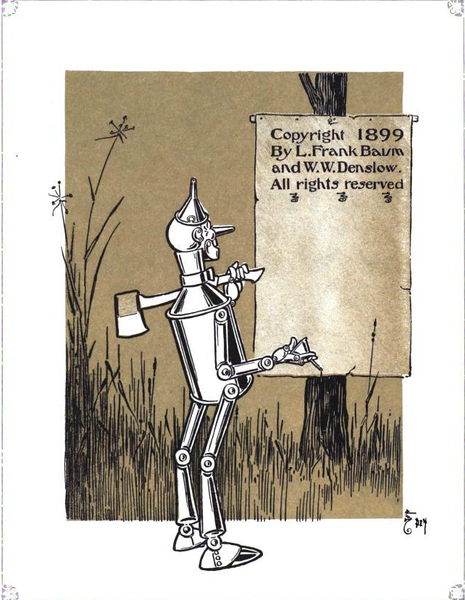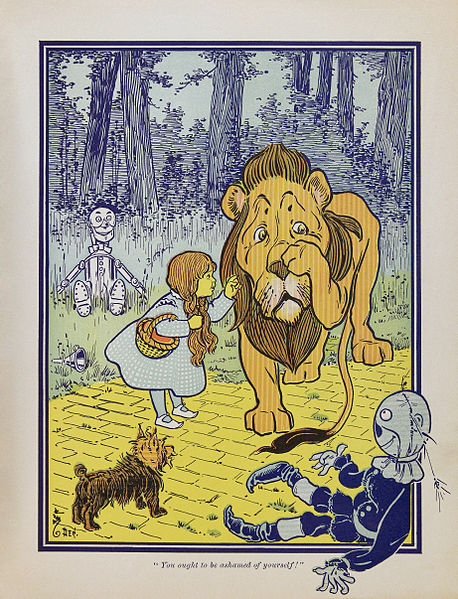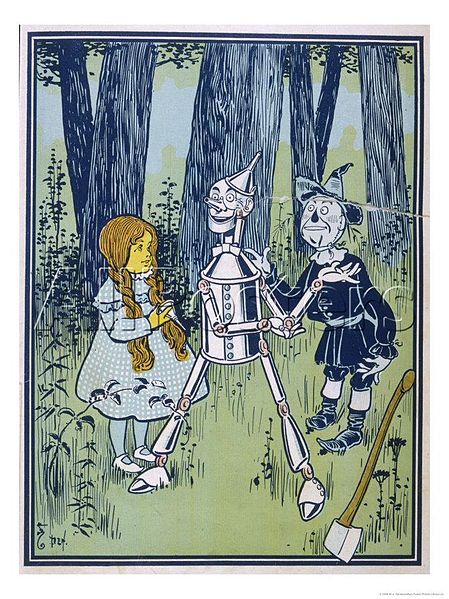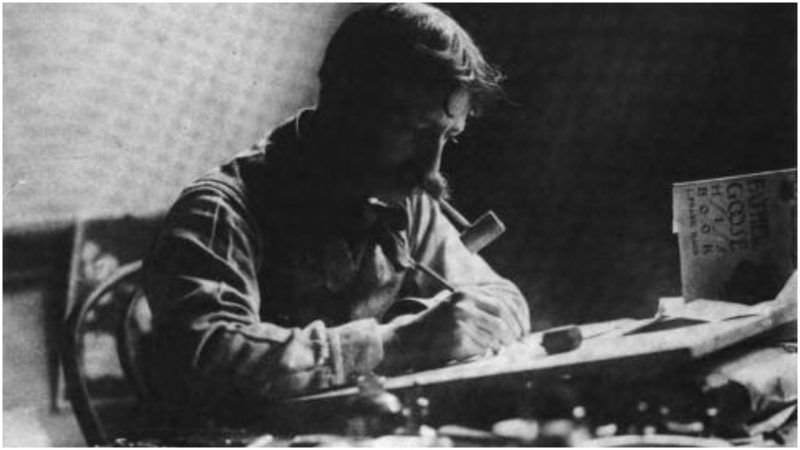The Wonderful Wizard of Oz was published in 1900, cementing author L. Frank Baum and illustrator W. W. Denslow as major players in children’s literature. The book introduced the world to iconic characters such as the Cowardly Lion and the Wicked Witch of the West. At the time, critics heralded it as a true American fairy tale, and its appeal has only continued to intensify with the aid of several film and stage adaptations.
It turns out that Dorothy Gale’s adventure was the second lucrative project for Baum and Denslow. Their Father Goose, His Book had been published the year before. Initially, no publishing company would take a risk on the work because the pair insisted on expensive color illustrations. The George M. Hill Co. eventually agreed to publish the collection of poetry but only if the collaborators absorbed the cost of printing. They did, and it went on to sell over 75,000 copies—a remarkable feat in 1899.
Cashing in on their quick popularity, Baum and Denslow produced a 1902 stage adaptation of their most popular work, entitled The Wizard of Oz. This production brought in Paul Tietjens as composer, with Baum writing the libretto and Denslow designing the costumes and sets. It proved a major hit, running almost 300 performances on Broadway as well as touring across the United States through 1911. The show itself skewed heavily away from the plot of the original novel.

The witches were mostly unimportant characters and the Wicked Witch of the West did not appear at all. Similarly, Dorothy’s traveling companion was not her dog, Toto, but rather Imogene, a cow. Other new characters added included King Pastoria II, Tryxie Tryffle, and Cynthia Cynch. Baum would later express dissatisfaction with the production. However, this did not keep him from entering a bitter dispute with Denslow over royalties.
Since Denslow shared copyright on the original novel, he felt his contribution was equal to the other two writers. Baum disagreed and the ensuing fight destroyed their working relationship. However, the already accrued royalties from their books proved enough for Denslow to buy Buck’s Island, a tiny area of Bermuda. There, he built a stone home intended to be reminiscent of a castle and installed himself as king. His official self-designated title was King Denslow I, Monarch of Denslow Islands and Protector of Coral Reefs.

While residing as an unofficial monarch, Denslow continued to capitalize on the success of his Oz illustrations. He released the syndicated cartoon Denslow’s Scarecrow and Tin Man in late 1904, making it available to newspapers in the United States. The venture proved a failure, however, and was quickly overshadowed by Baum’s own syndicated strip, Queer Visitors from the Marvelous Land of Oz, released around the same time.
Though Denslow continued to illustrate, his later career never matched his earlier successes. He published The Pearl and the Pumpkin in 1904 with the intention of adapting it into an extravagant stage musical. While critics praised the physical production as expensive and spectacular, the show closed quickly after opening in 1905. One detractor might have been its too-familiar plot which revolved around a farm girl who is transported to a magical land.

Baum published his first Oz sequel, The Marvelous Land of Oz, during this same time. John R. Neill provided the illustrations. In 1908 Denslow sold his Bermuda kingdom for $30,000 and moved to New York. Unable to find solid employment, he began drinking heavily. In his final years, he did occasional work for minor advertising agencies as well as novelty art.
By 1915, at the age of 58, be died of pneumonia. Baum continued to collaborate on Oz books with Neill, producing 13 sequels in total. However, none have remained as lasting and popular as the original, with Denslow’s work still being reproduced today. Though he was unable to maintain his castle on Buck’s Island, Denslow remains a king of children’s illustration.
———————————————
Christopher Helton is a writer with special interests in theatre, children’s literature, and libraries. He holds a Master of Library and Information Science from SJSU. Find him on Twitter @chriscollated
